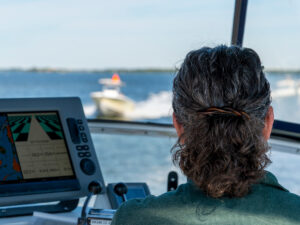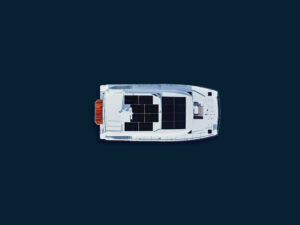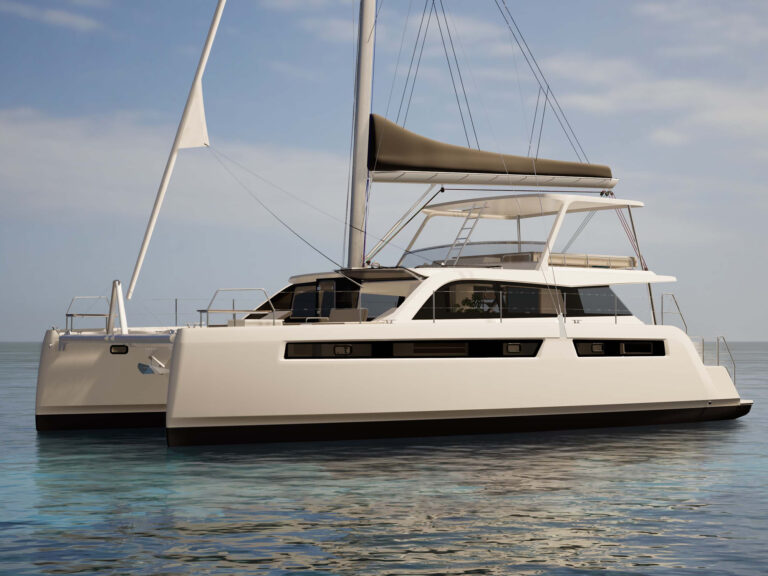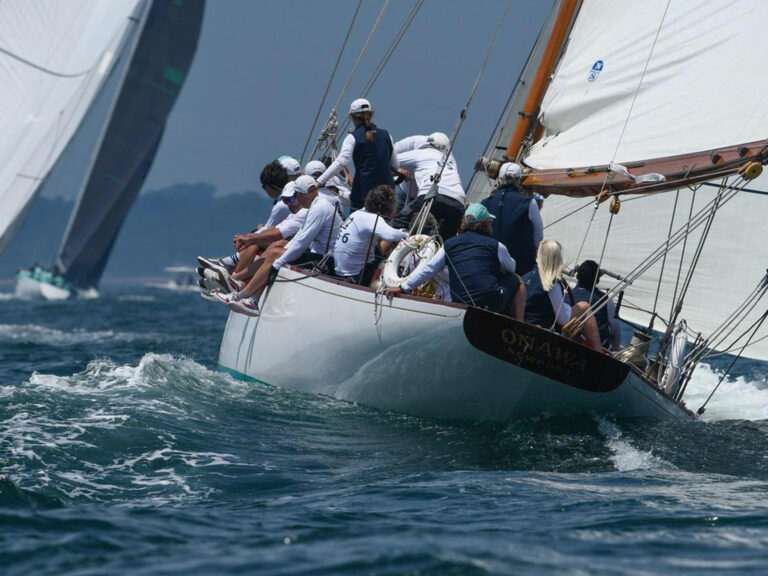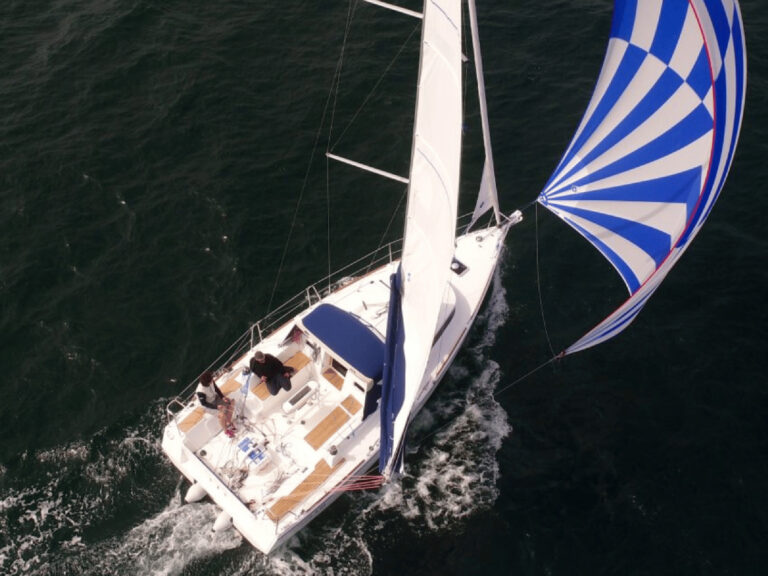Choosing the wrong bottom paint is never a good thing. I learned this bit of wisdom the hard way, when three layers of one, which a Venezuelan fisherman had touted as fantastico, fantastically started falling off in sheets shortly after our 32-foot ketch hit the water. Six weeks later, I was stirring up a cloud of paint dust as I sanded the paint off in a Colombian boatyard–an experience that fell far short of being fantastico. Ive since committed to memory the two most important lessons about bottom paint: Get one thats compatible with your old paint (or be prepared to do the necessary prep work), and precisely follow each step of the manufacturers application instructions.
Of course, if you wind up needing bottom paint in a Venezuelan fishing village, your choices are fairly limited. Back in the States, weve got the opposite problem: a mind-numbing array of choices. A waltz through the antifouling-paint aisle at a major marine retailer these days requires some fancy footwork–slime-blockers to port, modified epoxies to starboard. Ablative copolymers and kinder, gentler water-thinned types round out the broad selection.
These different bottom paints meet distinct needs, but theres another reason for the variety. Our little shopping foray is a cakewalk compared to the paint manufacturers search for chemical cocktails that will replace Tributyltin (TBT) and still meet environmental standards in every port. TBT is the tin-based antifouling agent introduced in 1960 thats now banned on boats under 83 feet in the United States, Australia, and most of Europe because of its poor environmental record. TBT paint is still legally sold to small-boat owners in parts of Africa, Asia, and South America. Its also available through licensed applicators in the United States for use on aluminum boats, which suffer from galvanic corrosion if coated with paints containing copper, the most common substitute for TBT.
Since the U.S. ban took effect in 1988, small boats here have been the proving ground for new recipes to combat barnacles. As if coming up with an eco-friendly combination that repels slime, weeds, and shell growth isnt challenging enough, paint manufacturers must also consider ever-stricter state and federal laws aimed at reducing the volatile organic compounds (VOCs) evaporating into the atmosphere.
“Recently, weve seen the testing requirements of agencies like the U.S. Environmental Protection Agency become more demanding and expensive,” says Jim Seidel, marketing manager for yacht coatings for Akzo Nobel, producer of the widely distributed International/Interlux bottom paints. “We have to look as far ahead as possible. You dont want to invest time and money in research and testing a product if its use is going to be restricted in five years.”
So far, the chemists have come up with a dozen potent TBT surrogates with such tongue-twisting names as dichlorophenyl dimethylurea. And those are just the biocides, additives that kill microorganisms. There are also slippery coatings that contain no biocides. Cuprous oxide remains the most popular tin-free antifouling agent, offering up to two years of protection against shell growth. The introduction of such boosting biocides as Irgarol 1051 and zinc pyrithione have made paints more effective against slime and weeds.
Weighing Your Options
So which product is best for you? The first step is to solve the compatibility issue: Either decide to sand off the old paint and start from scratch (which will usually entail methodical prep work plus priming), use a tie coat (an intermediate coat that ensures adhesion between new and old paint), or narrow your search to a paint that works with what’s already on the hull. If you have a mystery paint, don’t risk a guess. Check with the manufacturer of your new paint and find out if it recommends a clean start or simply the use of a tie coat such as Interlux’s Primocon or Pettit’s Tie Coat Primer.
Your next consideration is timing. How long will you be in the water before your next haulout? Do you plan to haul out your boat midseason for an extended period? Will you splash a couple months after painting or within two days? Some paints lose their zing if theyre out of the water too long. Consider whether you want a hard, scrubbable bottom paint that resists abrasion but builds with each successive application. Or do you prefer an ablative paint that renews its potency as you sail and gradually wears away, facilitating repainting?
To further complicate your search, each stretch of ocean has its own menagerie of critters that cling to your hull. Some biocides work better in tropical waters; others target coastal or freshwater nuisances. If an enviro-friendly coating is your chief concern, then youll want to consider the biocide-free varieties or water-thinned paints with less VOCs, which are also safer to use. One factor to remember is that more copper in a paint isnt the only factor that determines a paints effectiveness. Just as important is the resin blend that ensures the even release of the biocides over time. New boosting agents that fight slime also improve protection.
Of course, another consideration is price. In the United States, antifouling paints account for about 40 percent of the estimated $30 million market for marine coatings for recreational boats, so pricing remains competitive. In other words, you get what you pay for, says John Ludgate, vice president of sales and marketing for Pettit Paints. “When you add slime-fighting biocides like Irgarol, the protection level goes up, but these chemicals are expensive, so youre going to pay more. One area where weve seen lower prices is in ablative paints. Today, there are more varieties of ablative paints than there used to be, so youre seeing more affordable pricing.” Keeping all those factors in mind, heres a look at the latest and greatest in antifouling paint.
A Hard Solution
Contact-leaching paints are moderately hard bottom paints; they include hard epoxy, modified epoxy, oil, and alkyd paints. The biocide leaches out of the paint when it comes into contact with water. Eventually the biocide is gone, and an insoluble film remains, so after 10 years of repainting, you’ve got a thick layer cake on your bottom. These paints have a fairly smooth finish, and they can be loaded with biocides–usually cuprous oxide–so you can get long-term coverage (up to two years), even in some tropical waters. The industry leaders in the United States, International Paints (Interlux) and Pettit, have added some great slime-fighting biocides that cut down on the need for bottom scrubbing. A test group at our sister publication, Sailing World, found good results with the Interlux Ultra-Kote, which has Teflon, making it durable and easy to clean. Pettit’s Trinidad SR also has a loyal following, particularly among warm-water cruisers. If you’re looking for a water-soluble hard paint, Interlux’s relatively new Bottomkote Aqua, with low VOCs, allows for easy soap-and-water cleanup.
One nice thing about most contact-leaching paints (except for vinylester varieties, a super-hard slick paint geared for the racing or powerboat coterie) is that you can often paint over them with an ablative paint if thats the only choice where you land. Doing the opposite can have disastrous results. Likewise, the relatively benign solvents in most contact-leaching paints make them compatible for over-coating most paints. The downside is that the biocides in these paints will generally lose their effectiveness after 30 to 60 days of exposure to air, so anyone anticipating an extended haulout should plan on recoating before splashing.
|
|
| |
|

|
| |
| Shannon Cain|
| |
|
|
| |
| Well-stocked chandlery shelves in the United States, such as this one at Newport Nautical, in Rhode Island, require boat owners to do a little pre-purchase research on compatibility.* * *|
| |
|
|
|
Ablative Paints
Following my debacle in Venezuela and lukewarm results from a contact-leaching paint I picked up in Colombia, I applied four coats of an Australian ablative paint when we hauled out in French Polynesia. After spending the next three and a half years within 15 degrees of the equator with only minimal hard growth on the hull, I was sold on this type of paint, which is also called self-polishing paint.
Ablative paints release the biocide as water flows over the hull, gradually eroding layers of the coating and exposing fresh biocide as you sail. The paints come in several varieties, among them soft sloughing paints, which offer economical single-season protection for cruising boats but need to be immersed in water shortly after application; standard ablatives, harder coatings that can be exposed to air for longer periods (30 to 60 days, or more); ablative copolymers, which afford prolonged protection and arent affected by exposure to air; and water-thinned ablatives, which allow for easy cleanup, have low VOCs, and also retain their effectiveness after prolonged exposure to air.
If youre headed for fertile waters, youll want to consider an ablative copolymer with a slime-fighting additive, available from both Pettit and Interlux and other major manufacturers. Consider how often your boat will be under way. An idle boat will eventually need a scrub, and frequent scrubbing will shorten the life of any ablative paint. In addition, Washington state and several U.S. marinas have recently restricted or prohibited scrubbing boats with ablative paints.
Because ablative paints erode with time, the more you apply, the longer your protection lasts. However, applying more than four coats may promote cracking or peeling. Plan on using at least two coats, with an extra coat for fast-wearing areas.
U.S. Paints Awlstar Gold provides good protection for boats on the move. Pettits Ultra, with slime-blocking, also fared well in bottom-paint tests carried out by Practical Sailor. Cruising World contributor Steve DAntonio, who manages a boatyard on the Chesapeake Bay, and Robert Koch, a boatyard manager at River Bend Marina in Fort Lauderdale, Florida, have both seen good performance from Interluxs Micron Extra.
“Biscayne Bay is the real acid test,” says Koch. “Youve got warm temperatures and water down here in which stuff loves to grow.”
Late last year, Interlux introduced Optima, a novel two-part ablative copolymer that earned high marks in testing done by Practical Sailor. The paint is water-based, low in VOCs, and allows for easy cleanup. One drawback is that once you mix the two parts, you have to paint within a prescribed period. The pot life varies with the temperature, from two hours at 95 degrees to 24 hours at 40 degrees. Pettit (Aqua-Clean) and Woolsey (Hydrocoat) offer single-part water-based ablative paints.
Green and Clean
Long before sailors arrived, nature developed its own antifouling agents. Ever wonder why some starfish remain unblemished by marine growth, despite their leisurely pace across the ocean bottom? Their potent secretions ward off would-be hitchhikers. The starfish’s secret formula is just one subject scientists are exploring in their search for eco-friendly antifouling agents. New Nautical Coatings, a small firm based in Clearwater, Florida, that markets antifouling paints under the brand name Sea Hawk, is studying the possibility of a thin living coating that thrives on marine growth.
Responding to restrictions on biocides in some European waters, other paint manufacturers have turned toward super-slick biocide-free coatings. The advantage of this type of paint is that it maintains its effectiveness as long as it stays on your hull. Theres no soluble biocide that disappears over time. The primary drawback to this paint is the cost. International Paints (Interlux) Veridian, which only recently became available in some test markets, goes for about $140 for 2.5 liters (.66 gallons). Cruising sailors who choose Veridian should also expect to wipe their hulls regularly, because tenacious marine life will grow on the surface. But because the surface prevents adhesion, any growth can be wiped away quite easily. “Its more effective on powerboats, which move fast enough through the water to scour away any growth,” Seidel says.
While the move toward environmentally friendly coatings fosters a confusing list of choices, the end result will not only benefit the environment but also, one hopes, simplify shopping for bottom paints. Worldwide, the recreational market represents only a small slice of the marine-coatings pie, so once you venture far off the beaten track, paints geared toward the commercial shipping market are often the only ones youll find on the shelves. Along with International (Interlux), Sigma Coatings, Jotun Paints, and Nippon Paint Marine Coatings are the most common names weve come across in the Caribbean and western Pacific, with TBT-laced varieties still dominating the selection. Pettit recently joined forces with an Italian paint manufacturer to extend its reach to 24 countries with a brand it calls SuperNavi. Once the TBT ban takes full effect and an effective, universally acceptable blend emerges, our chances of finding a paint abroad thats compatible with a U.S.-bought variety should improve. With any luck, well wind up with a concoction thats fantastico–wherever we choose to roam.
Darrell Nicholson is a CW associate editor.



